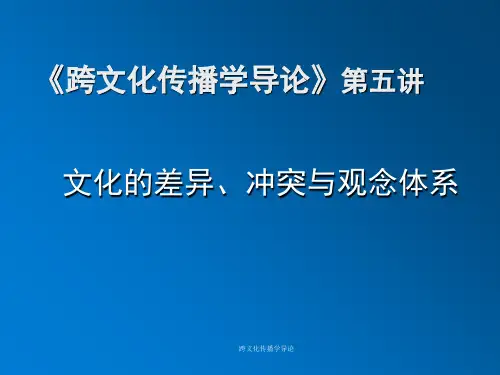跨文化交流第五讲
- 格式:ppt
- 大小:576.50 KB
- 文档页数:54

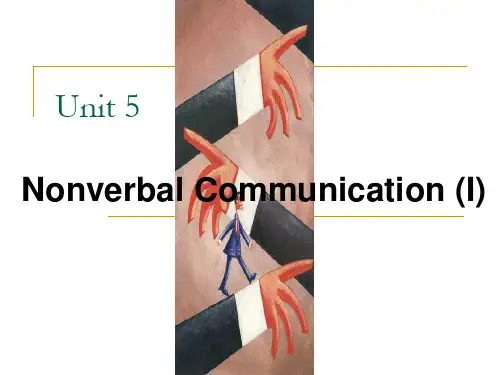
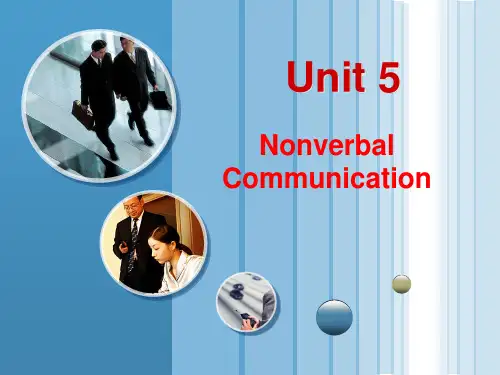

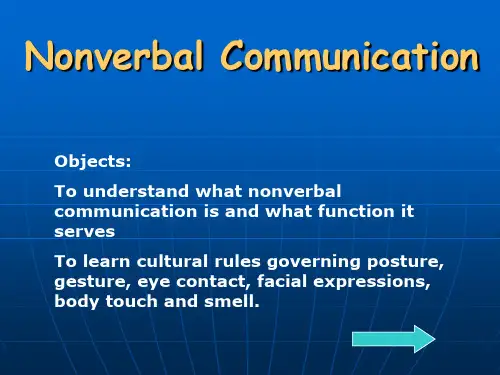
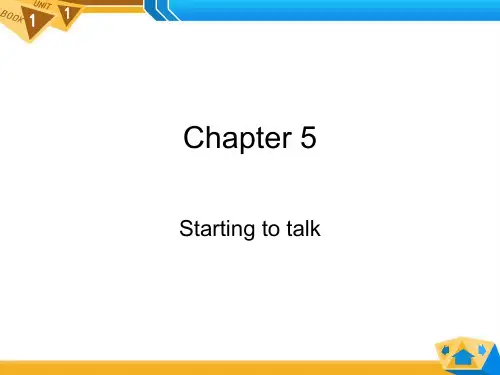
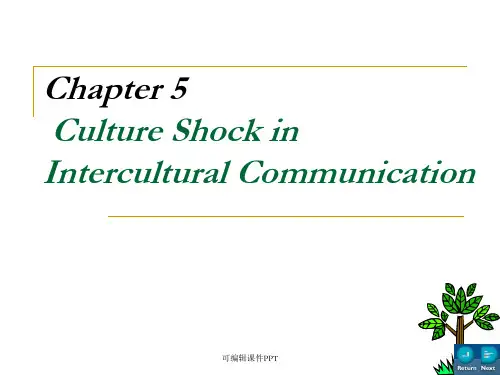
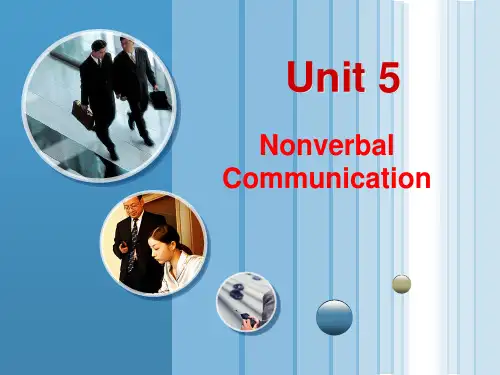

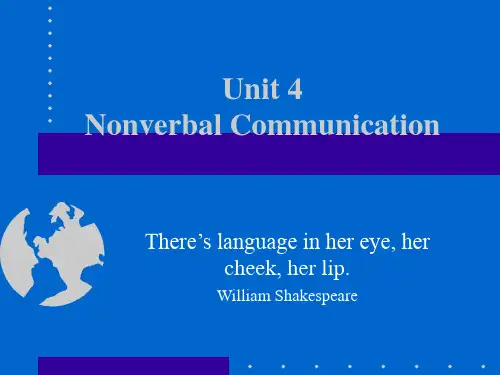
Unit 4 Nonverbal Communication There’s language in her eye, hercheek, her lip.William ShakespeareCases•Turn to talk with another man•The problem of using the local language •Being left in the cold•She is not supposed to be wearing trousers •Falling in love with each other •Gesture issues of some world-famous figures•An misunderstanding of seating culture •This is not a love signalNonverbal Communication•underestimated status•study areas•cultural differences•temporal language•spatial language,touch and non-touch culture•kinesics•paralanguagestatus•Unawareness•less than 30% information by verbal forms •more than 70% information by nonverbal forms•93% VS. 7%Study areas•Time language (chronemics)•Space language(proxemics)•body language (kinesics)•paralanguage •EnvironmentCultural Differences•Silent language /hidden demension •e.g.snapping fingers to call a waiter • e.g. For men to embrace each other •for women to hold handschronemics•Monochronic Time•English phrases:•punctual, on schedule, on time, on the minute, on the hour, at the appointed time, at the stated time, in time, in good time, timely, well-timed, perfect timing •Polychronic Time: schedule several activities at the same timeProxemics, touch culture, non-touch culture•Body bubbles•four distances:•intimate(0-45centimetres)•personal distance (45-80centimetres)•social distance (1.3-3 meters)•public distance (2-3 meters)•personality (introverts, extroverts)Body distance •Short distances: Latins, MediterraneanArabs, Mediterranean Europeans •Medium distances: Americans, Northern Europeans•Long distance: JapaneseTouch &Non-touch culture •Touch culture: Arabs envelop each other intheir breath.•Non-touch culture: cold climate •seating arrangementsKinesics•The body language vocabulary:700,000 items•Posture: Bao Qingtian •Gestures: the sign for beckoning •facial expressions: smile , when to smile •eye contact•smellparalanguage•V oice modulation•tempo•silenceResearch Question•Have you heard of aura? Has it anything to do with the “personal bubbles”? Go to the library or go on line, see if you can find some information on it. If you are interested in it, please write a log about it.。
